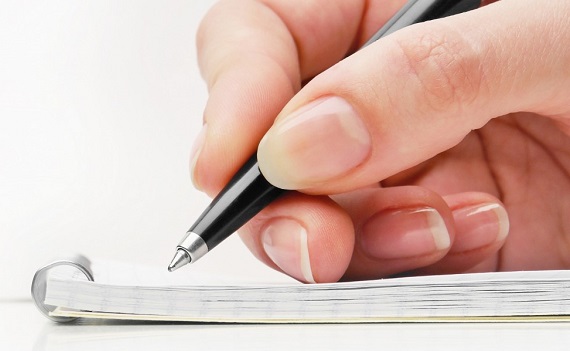With letter writing becoming an obsolete art thanks to ubiquitous devices like the iPad, handwriting skills among children are becoming progressively worse, according to teachers, counsellors, and parents.
However, students themselves do not appear concerned saying that handwriting serves little function except during exams.
“Who writes now? We type, use our mobile phones and tablets to make notes and to-do lists. Of course, it is still important, but I think even teachers now pay more attention to the actual content than the presentation of it,” said Raina Sayed, 16, a student from Dubai International Academy.
Counselling head of department for grades KG, 1 and 2 at Dubai’s JSS School, Vineeta Kapoor said there was formerly a lot of emphasis on the structure of writing and not so much the content.
“However now, learning has become more activity based. It’s all about learning by fun and you let the child focus more on thinking and enquiring and more on the content. Handwriting has become less of a priority.”
She suggested that one reason why writing had taken a back seat could be because the practice of writing letters had become outdated.
“Letter writing has become obsolete. It’s mostly about emails now. There are several changes in education itself. These children who are in KG today, coming out of technology, how much paper are they using,” Kapoor said.
“In traditional schools, the child is more focused on writing. Creativity in content is more important than the presentation itself. But even parents are using iPads and memo pads to make lists. However, schools are still encouraging children to write on special writing and cursive handwriting books, just so that the habit does not die down.” Parents of seven-year-old Gavin Fernandes said they had invested hundreds of dirhams in cursive handwriting books for their son. “But his handwriting still looks like hieroglyphics,” joked his father, Trevor Fernandes, a resident of Dubai and a media professional.
“But when it comes to using the keypad or the typing board, I have not seen Gavin do anything faster. The younger generation is just faster at picking up such things.”
Gavin’s sister Pearl, 12, however, has neat, legible handwriting. “Sometimes to encourage Gavin, I tell the kids that the neatest handwriting will win a brand new pencil box. Gavin puts in effort only on the first six lines of the page, after which, it goes back to looking like hieroglyphics. I guess as long as his teachers understand him, it is all right,” said Fernandes.
Some experts also recommend that students need to be motivated and encouraged by their teachers into the habit of writing neatly and legibly.
Eight-year-old Madhavi Kesavan, a student at Kings Dubai, possesses excellent handwriting skills, according to her mother, Anasuya Kesavan.
“Art is my favourite subject. I like being creative and there is nothing right or wrong in art. I like writing,” said Madhavi.
In most British curriculum schools, students have to earn the right to use with pens, through a ‘pen licence’.
“If students are able to write legibly on paper using pencils in a cursive font, then they can start using a pen. Madhavi was one of the first students in her class to start using a pen,” said Kesavan.
However, the mother-of-two believes that handwriting is a very individual trait.
“My older one is now 19, and with her I had invested a lot on handwriting books. Some people just have bad handwriting, and good handwriting is something you are born with. But my second one, Madhavi, has excellent handwriting. Her school takes special care in seeing to that she writes neatly,” she added.
She added pen licences were an excellent way to encourage children to write legibly.

